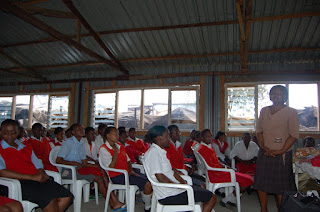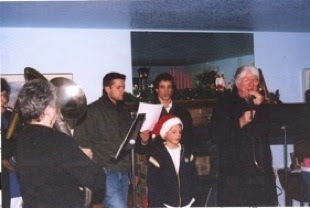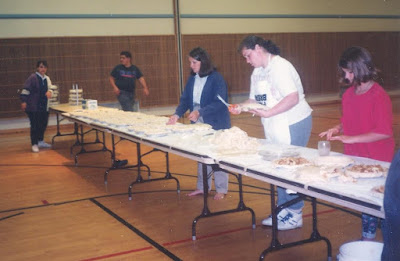 As I read Janette Rallison’s My Fair Godmother, I was reminded of the one time I tried drawing a pattern with a Spirograph. As the wheels turned and the cog that had my pen in it spiraled away from the beginning of the design, I thought there was no way it would ever connect up, and I was going to be left with a picture that looked like a plate of spaghetti sliding off the page. Of course, the lines connected, and when I finished, I had a beautiful, symmetrical, intricate design.
As I read Janette Rallison’s My Fair Godmother, I was reminded of the one time I tried drawing a pattern with a Spirograph. As the wheels turned and the cog that had my pen in it spiraled away from the beginning of the design, I thought there was no way it would ever connect up, and I was going to be left with a picture that looked like a plate of spaghetti sliding off the page. Of course, the lines connected, and when I finished, I had a beautiful, symmetrical, intricate design.That’s the way Janette’s plot is: it’s devious, serpentine, quirky, and way out there, but it always plays fair with the reader, and it all ties up neatly as you go along.
There’s a complete fairy tale framework that exists in our common body of knowledge, and Janette makes good use of that when the main character, Savannah, is sent to that alternate universe by her Fairy Godmother-Intern. The real fun begins when Savannah returns to fairy-tale land to rescue a nerdy boy from her high school who was sent there by the ditzy fairy godmother-in-training.
But, I get ahead of myself. My Fair Godmother is about Savannah, a sixteen-year old girl who is popular, style conscious, and an indifferent student. When her good-looking, athletic, studious boyfriend dumps her for her brainy older sister, Savannah falls into despair. You see, she’s already bought her dress for the prom, and now she doesn’t have a date. That’s where the Fairy Godmother comes in.
The fact that Chrissy, the Fairy Godmother, is Savannah’s almost-twin isn’t lost on either the reader or on Savannah. Chrissy is more interested in her wardrobe than in learning to be a competent godmother, and she’s very self-centered. Nothing that goes wrong is ever her fault. She also doesn’t appear to be the brightest twinkle in the magic dust pouch.
Savannah also sees herself as not terribly smart. As she says, when she finds herself with the seven dwarfs and they treat her like a simpleton: “…I still didn’t like being treated as though I was an idiot. Because I was smart. Even if I had nothing to show for it, like knowledge.”
One of the joys of this book, and there are many, is the reader’s realization, along with Savannah, that she IS smart. She may not have an incisive, scientific-type mind like her straight-A sister, but she has a lot of common sense and survival skills that come in mighty handy in middle-age fairy-tale land.
I am a complete Janette Rallison fan, and this book is one of her best. I dare you to read it without smiling. Can’t be done.
Click here to watch a short clip of Janette talking about two of her new books: Just One Wish and My Fair Godmother.








